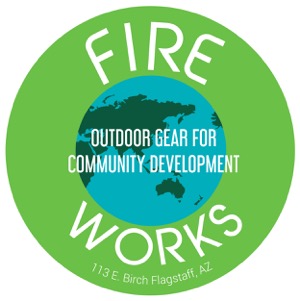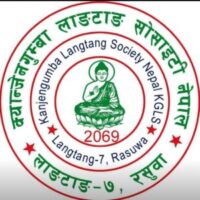Basic Aid, Elder Care, and Clinic Support: Langtang, Nepal
2015-2020
On April 25, 2015, a magnitude 7.8 earthquake, called the Gorkha earthquake, rocked Nepal. Countless aftershocks followed for days and weeks in some areas. The earthquake triggered an avalanche in the Langtang Valley, high in the Himalayas at 9,800-12,500 feet. Langtang was not the epicenter of the earthquake. But it was close to it and lost 1/3 of its community and many more tourists and trekking guides. Located on the Tibet border, Langtang is a bus ride and a two-day trek from Kathmandu or a half-hour helicopter ride. It is a favorite destination on Nepal’s third most popular trekking route. It is a small village in Langtang National Park and the Langtang Valley, along the Langtang River at the base of Langtang Ri and Langtang Lirung, offered an idyllic paradise of rock houses, grazing yaks, and traditional people seemingly bypassed by time, high in the snow-capped, majestic Himalayas. 175 Langtangpas were instantly killed, along with 110 foreign trekkers and 30 Nepali guides. 13 children were left without parents.
It was mid-day on a beautiful, bright, crisp spring day high in the mountains. It was a slow morning after a very late night at the 49-day funeral ceremony of a beloved community member. Hundreds of people were visiting from across the area and other valleys to pay their respects and see other families. Suddenly, the sky went black. The wind blew with deadly speed, blowing people hundreds of feet, knocking people unconscious, and burying others. A landslide, with half the force of the atomic bomb that hit Hiroshima, traveled more than 3,000 feet down a mountain, burying 1/3 of the homes and people of Langtang under 100 feet of snow, ice, and rock. The force leveled the trees on the opposite side of the valley. The landslide took so much off the mountain that it stopped the river, damming it, creating massive flooding, and destroying bridges for dozens of miles of trail. Access to the valley was impossible. For about a week, the survivors of Langtang lived without food or water in caves and makeshift shelters, huddled together, weathering every aftershock, rain, and snow. They were eventually rescued by helicopter and relocated to an Internally Displaced Person (IDP) camp on the grounds of the Yellow Gompa Monastery in Kathmandu.
The 400 survivors of Langtang spent five months in tents on the grounds, living as one giant family. Within two months of the earthquake, they elected 26 leaders to serve as the Langtang Management and Reconstruction Committee (LMRC). They realized they could not wait for the government to help them rebuild and began to connect with the large international community of individuals, volunteers, and small non-profits who connected to Langtang. Within one year of the earthquake, they had raised almost $1 million towards reconstruction efforts. This was intended to be equally split amongst the 116 recognized families of the valley. In the fall of 2015, the trail to Langtang was opened again. By March 2016, most villagers had returned to the valley and begun to rebuild.
FIRE stayed involved with the “overlooked elders” we met during our immediate response in 2015 until 2020. We also worked with the local clinic once rebuilt and hosted volunteers in the Langtang Valley to support both programs. These projects are detailed below. In 2019, Langtang received electricity for the first time from a hydropower project. This also brought more reliable internet. TV and microwaves also arrived in the village. A road has been built for small vehicles as an alternative to the trail. It is not often used, yet. The rapid rebuilding and redevelopment of Langtang, the departure of our Country Director from Nepal, and the onset of COVID prompted FIRE to make the very difficult decision to close these projects at the end of 2020. As of 2024, the community is continuing to thrive and modernize.
It was an immense and humble honor to be welcomed into the community of Langtang at such a level. We were able to develop more thorough programs. Learning about Langtang’s customs and culture changed our lives. Thank you to the people of Lantang for welcoming and collaborating with FIRE.
During FIRE’s time in Nepal, we accomplished the following:
- Distributed $25,000 worth of immediate aid to 60 of the 116 Langtang families, hand-to-hand. This included medical treatment, food, shelter, clothing and blankets.
- Helped build a bridge on the main trail to Langtang Valley.
- Assisted the 13 single elders who wintered in Langtang, the most vulnerable members of the community with 1,100 pounds of aid.
- Built a local team in Kathmandu and Langtang.
- Conducted a needs assessment.
- Identified the highest need individuals and families.
- Met with relevant stakeholders, community leaders and local families to determine FIRE’s long-term priorities and outline for sustainable, empowering programming.
- Collected three hours of film footage including 19 interviews from survivors age 8 to 70.
Established a retail store in Flagstaff to raise funds.Assisted the 13 single elders who wintered in Langtang, the most vulnerable members of the community with 1,100 pounds of aid.
Within a month of Nepal’s devastating earthquake on April 25, 2015, the Flagstaff, Arizona, community donated $25,000 to FIRE through three different fundraisers to aid the village of Langtang, Nepal. FIRE distributed $25,000 worth of assistance to families in Langtang in the six months following the earthquake. This included medical treatment, food, shelter, clothing, and blankets. In early 2016, FIRE funds helped build a bridge on the main trail to Langtang Valley in preparation for their move back to the village after the earthquake. FIRE continues to provide basic aid and support occasionally to other communities in Nepal.
In December 2015, FIRE hired Tashi Tamang to work manage our work in Langtang. Tashi was elected Chairman of the Langtang Buffer Zone User Committee under the Langtang National Park shortly thereafter. In this position, he managed the combined budget of Langtang National Park, USAID, and the World Wildlife Federation in support of the Langtang Valley. He oversaw the administration of the nine villages in the valley and was responsible for holding regular debates and votes with the community. He also served on the Langtang Management and Reconstruction Committee and was Treasurer of the Kangin Gompa Langtang Society. Tashi’s unique position and combination of roles allowed FIRE to leverage our resources for maximum effect. We were able to build on other projects and understand the underserved areas.
We quickly learned those in the greatest need were the “orphaned” elders. These were individuals who had no surviving family. There were no children, spouses, or extended family members to help care for them. Many had trouble walking, seeing, and using the toilet properly. They were also without the ability to spend the winter of 2015 in Kathmandu, as most of the rest of the residents of Langtang did, waiting for Spring to rebuild. Instead, they spent the winter at 12,500 feet in make-shift shelters.
In February 2016, FIRE transported (by truck and helicopter) and distributed 1,100 pounds of aid to thirteen elders of Langtang. The aid included food, bedding, and nutrient drinks similar to Ensure. FIRE also visited each person’s shelter to assess their needs further.
In December 2016, FIRE moved eight of the most vulnerable elders into an empty guest house for the winter and covered all their expenses for bedding, food, clothing, medicine, and day-to-day needs. The guest house managers were paid to prepare meals and clean the facility. This was the “Elder House.” For the four coldest months of winter, these eight people were warm, fed, cared for, and safe. In the spring, they moved back to their shelters.
In the fall of 2017, FIRE purchased stoves, gas, and firewood so they could cook throughout the next winter. In early spring 2018, six elders moved into a building with six private rooms, 150 square feet, locking rooms, a wood-burning stove, and a shared outhouse toilet built by Community Action Nepal (CAN).
In October 2018, we distributed 2,300 pounds of food and firewood to the Elders. This was enough food to last through winter. The food included basics such as rice, buckwheat flour, cooking oil, tea, onion, and powdered milk.
The recently built and well functioning Langtang Health Clinic. It was managed by the Kyanjin Gompa Langtang Society (KGLS) in a successful partnership with an Australian NGO who helped with funding and systems management remotely. It was all lost with the earthquake. In 2018, they were able to complete reconstruction and reopen with a government appointed healthcare worker to be placed there.
FIRE’s began working with the clinic in 2018 by doing community needs assessments, bringing medical supplies for the clinic and doing hygiene and basic first aid supply distribution to community members including specific “high request’ items like back braces.
We facilitated two small groups of medical volunteers to the clinic. In the spring of 2019, a team from East Tennessee State University (ETSU) and Shenandoah University travel to Langtang to research and plan for the infrastructure to implement long-term medical programing for volunteers as well as public health students to offer support. We conducted a needs assessment of female community members through one-on-one interviews and group conversations. We also reviewed the systems and methods used earthquake to those currently established.
At the time COVID-19 hit, we were planning to work with ETSU and Shenandoah University to support KGLS and help set up a patient tracking system, provide vacations and build support for the community through student and volunteer outreach.

In May 2015, immediately following the earthquake, Sun Valley, Hailey, and Ketchum, Idaho communities collected more than 5,000 pounds of high-quality, name-brand winter clothing for Nepal. Given the unreliability of Nepali customs, the donors in Idaho and their partners in Nepal decided not to ship the clothing to avoid losing the contents in customs. Knowing FIRE’s long history of managing large volumes of clothing, they asked us to sell the clothing and use the money to support our work in Langtang.
In March 2016, FIRE Works Store was born in downtown Flagstaff on Birch, across the hall from our regular office. For almost two years, FIRE Works sold name brand new and used outdoor clothing, consignment, art and Mongolian and Kazakh handi-crafts, closing at the end of 2017. All proceeds supported FIRE’s support of the elders in Langtang ensuring they are the supplies food and firewood they needed for four winters after the earthquake.
We had a wonderful time interacting and reconnecting with the community of Flagstaff every day through this project. The storefront closed, but while it was open it revived our sales of Mongolian yurts which turned into MongolianYurts.org. We also still have Mongolian and Kazakh handi-crafts for sale in our office.








